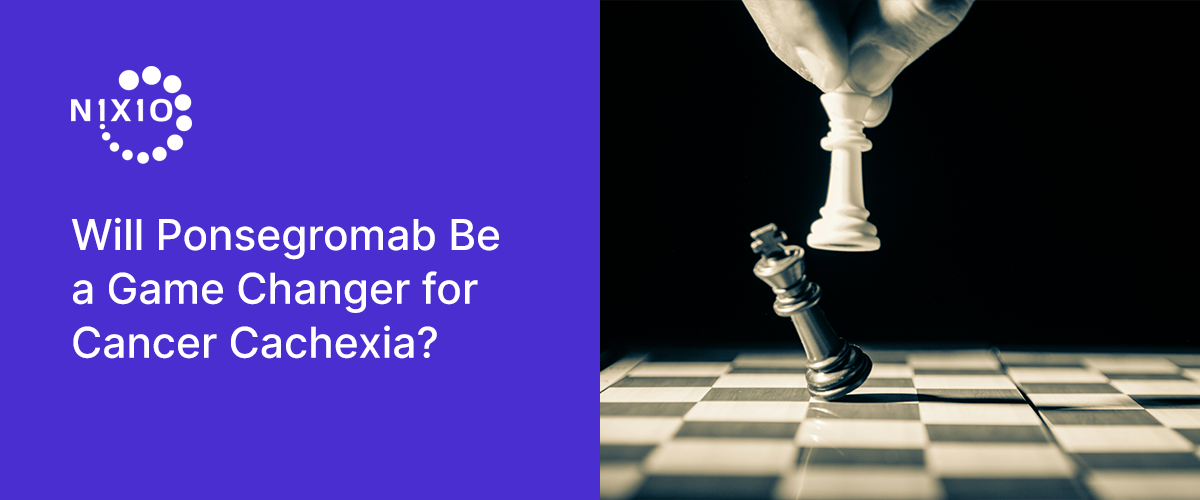Cachexia (wasting syndrome) is prevalent among patients with multiple forms of cancer and can lead to weight loss, muscle wasting, lower quality of life, functional impairment, and reduced survival. In addition to harming quality of life, cachexia is also estimated to be responsible for as many as 30% of deaths in some cancer types. International consensus criteria define this multifactorial syndrome as a weight loss, from fat and skeletal muscle, of more than 5% during a 6-month period or weight loss of more than 2% in patients with either a body-mass index (BMI) of less than 20 or sarcopenia (loss of muscle tissue).
Cachexia has long been considered an almost insurmountable problem in people with cancer, usually those with advanced disease. Although it can occur in many types of cancer, it most commonly occurs in people with pancreatic, colorectal, lung, and head and neck cancers, as well as some blood cancers and sarcomas. In its most severe form, it can cause extreme weakness and fatigue, along with unwelcome changes in skin color and overall physical appearance. Its physiologic impact, particularly on the lungs and heart, can lead directly to death.
Over the last decade, cachexia researchers have made substantial headway in understanding the biologic players involved in cachexia and identified some tangible leads for possible treatments.
Among the most promising treatment leads has been growth differentiation factor 15 (GDF-15) a stress-induced type of protein, a cytokine, that travels to the hindbrain (brainstem and cerebellum) where it latches on to the glial cell–derived neurotrophic factor family receptor alpha-like protein (GFRAL). GFRAL, it turns out, plays a critical part in controlling appetite. Several studies showed that GDF-15 is often abundant in the blood of people with cachexia. These and other studies also determined that GDF-15 wasn’t just an indicator of cachexia but actively involved in causing it.
Following that discovery, several studies showed that experimental drugs that lock on to either GDF-15 or GFRAL and block their interaction resulted in never-before-seen improvements in weight and survival in studies of mice with cachexia. With these exciting results in hand, human clinical trials of GDF-15 targeted drugs, including ponsegromab, a monoclonal antibody, were quickly launched.
In a phase 2 clinical trial, 187 patients with lung, colorectal, or pancreatic cancer who had to have unintentionally lost at least 5% of their body weight over the previous 6 months (an accepted definition of cachexia), and to have elevated blood levels of GDF-15 were randomly assigned to receive one of three doses of ponsegromab (100 mg, 200 mg, or 400 mg), given as an injection, or a placebo injection, once every 4 weeks for 3 months. Most participants had already received many cancer treatments and nearly all were still undergoing active treatment for their cancer. In addition, many had GDF-15 levels that were twice those the trial leaders had established as the minimum required for being in the study, according to Jeffrey Crawford, M.D, of the Duke Cancer Institute, one of the study’s investigators.
Participants treated with ponsegromab gained weight, anywhere from 2 to 6 pounds on average over 12 weeks, depending on the dose they received. By comparison, people treated with the placebo lost an average of 1 pound. The group of patients treated with the highest dose, 400 mg, in fact, gained back more than 5% of their body weight. This group also reported having better appetites, fewer cachexia-related symptoms, and were physically more active than those who received a placebo. In addition to gaining weight, they also put on muscle mass and many reported improved ability to perform everyday physical activities. Ponsegromab caused few side effects, and few people stopped treatment because of them.
Richard Dunne, M.D., of the Wilmot Cancer Center in New York and an investigator on the trial, is planning to launch a larger trial of the drug next year in cancer patients with cachexia. If the trial produces similarly positive results, it could lead to the drug’s approval by the Food and Drug Administration.


